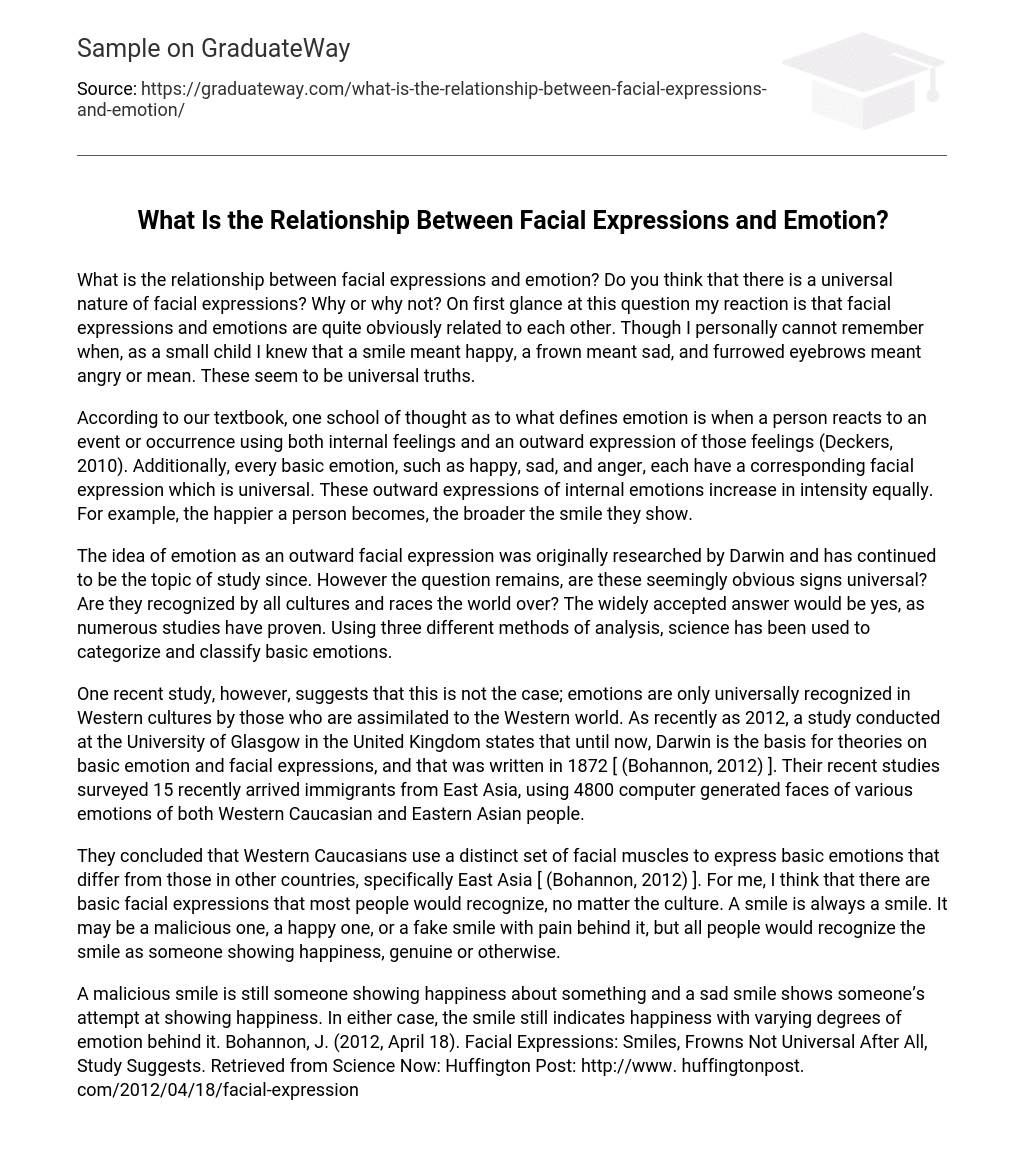What is the relationship between facial expressions and emotion? Do you think that there is a universal nature of facial expressions? Why or why not? On first glance at this question my reaction is that facial expressions and emotions are quite obviously related to each other. Though I personally cannot remember when, as a small child I knew that a smile meant happy, a frown meant sad, and furrowed eyebrows meant angry or mean. These seem to be universal truths.
According to our textbook, one school of thought as to what defines emotion is when a person reacts to an event or occurrence using both internal feelings and an outward expression of those feelings (Deckers, 2010). Additionally, every basic emotion, such as happy, sad, and anger, each have a corresponding facial expression which is universal. These outward expressions of internal emotions increase in intensity equally. For example, the happier a person becomes, the broader the smile they show.
The idea of emotion as an outward facial expression was originally researched by Darwin and has continued to be the topic of study since. However the question remains, are these seemingly obvious signs universal? Are they recognized by all cultures and races the world over? The widely accepted answer would be yes, as numerous studies have proven. Using three different methods of analysis, science has been used to categorize and classify basic emotions.
One recent study, however, suggests that this is not the case; emotions are only universally recognized in Western cultures by those who are assimilated to the Western world. As recently as 2012, a study conducted at the University of Glasgow in the United Kingdom states that until now, Darwin is the basis for theories on basic emotion and facial expressions, and that was written in 1872 [ (Bohannon, 2012) ]. Their recent studies surveyed 15 recently arrived immigrants from East Asia, using 4800 computer generated faces of various emotions of both Western Caucasian and Eastern Asian people.
They concluded that Western Caucasians use a distinct set of facial muscles to express basic emotions that differ from those in other countries, specifically East Asia [ (Bohannon, 2012) ]. For me, I think that there are basic facial expressions that most people would recognize, no matter the culture. A smile is always a smile. It may be a malicious one, a happy one, or a fake smile with pain behind it, but all people would recognize the smile as someone showing happiness, genuine or otherwise.
A malicious smile is still someone showing happiness about something and a sad smile shows someone’s attempt at showing happiness. In either case, the smile still indicates happiness with varying degrees of emotion behind it. Bohannon, J. (2012, April 18). Facial Expressions: Smiles, Frowns Not Universal After All, Study Suggests. Retrieved from Science Now: Huffington Post: http://www. huffingtonpost. com/2012/04/18/facial-expression-culture-_n_1434175. html Deckers, L. (2010). Motivation: biological, psychological, and environmental (3rd ed. ) Boston: Pearson/Allyn & Bacon.





